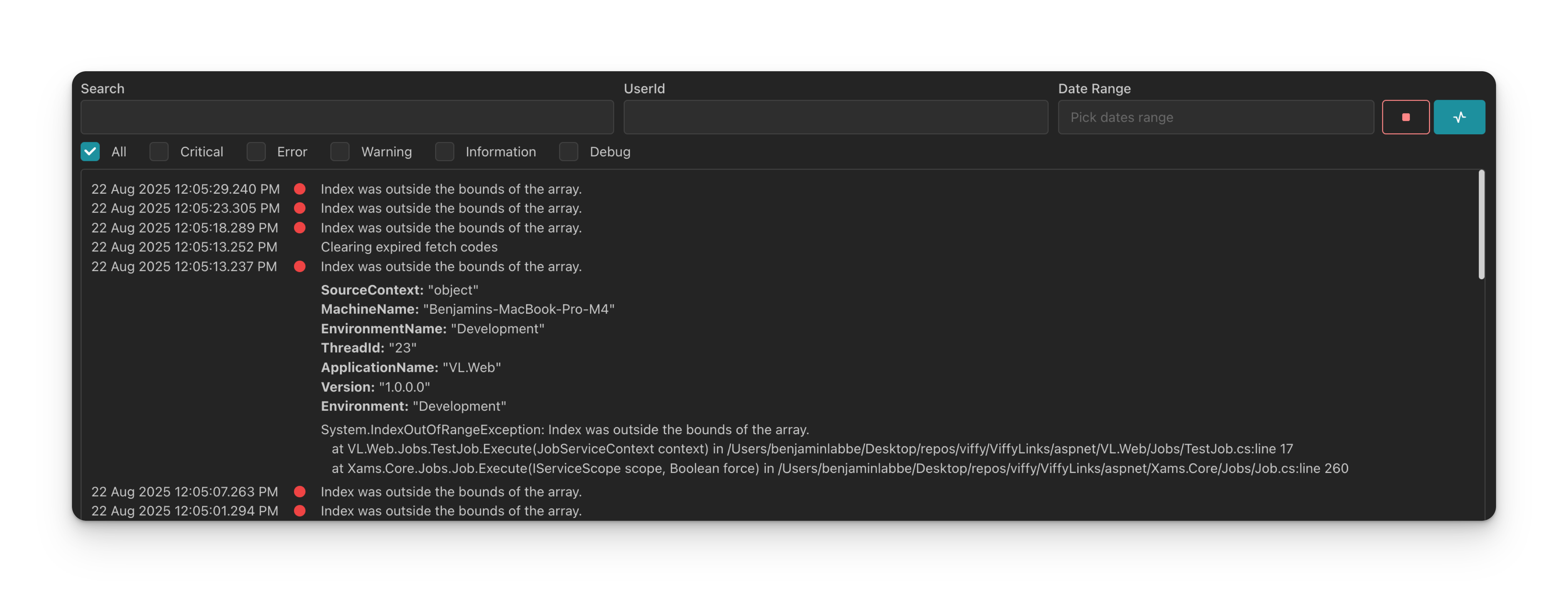Logging
Xams provides comprehensive logging capabilities to monitor application behavior, track errors, and troubleshoot issues through a centralized logging interface accessible from the Admin dashboard.
Overview
The logging system captures all application events with structured data, making it easy to search, filter, and analyze your application's behavior over time.

Configuration
To enable logging in your application, configure the Xams logging provider in your Program.cs file:
Project/Program.cs
Once configured, all logs from your application are automatically captured and stored in the database for easy retrieval through the Admin dashboard.
Structured Logging
Xams uses structured logging to ensure all log properties are queryable and searchable. When writing logs, always use message templates with named parameters instead of string interpolation:
Project/Services/WidgetService.cs
Using structured logging parameters enables the search functionality to query specific property values, not just the message text.
Log Levels
Xams supports standard .NET log levels for categorizing messages:
Project/Services/WidgetService.cs
Searching Logs
The Admin dashboard provides powerful search capabilities through the logging interface:
- Full-text search: The search box performs text searches across both log messages and all structured data properties
- Time filtering: Logs are automatically timestamped and can be filtered by date range
- Level filtering: Filter logs by severity level to focus on errors or warnings
Search queries match against both the formatted message and all structured properties, making it easy to find logs by any included data point.
Log Retention
Log retention is configured directly from the Admin Dashboard through the LOG_HISTORY_RETENTION_DAYS setting. This setting specifies the number of days to retain logs before they are automatically removed.
The default retention period is 30 days. Logs older than the configured retention period are automatically removed during scheduled cleanup operations.